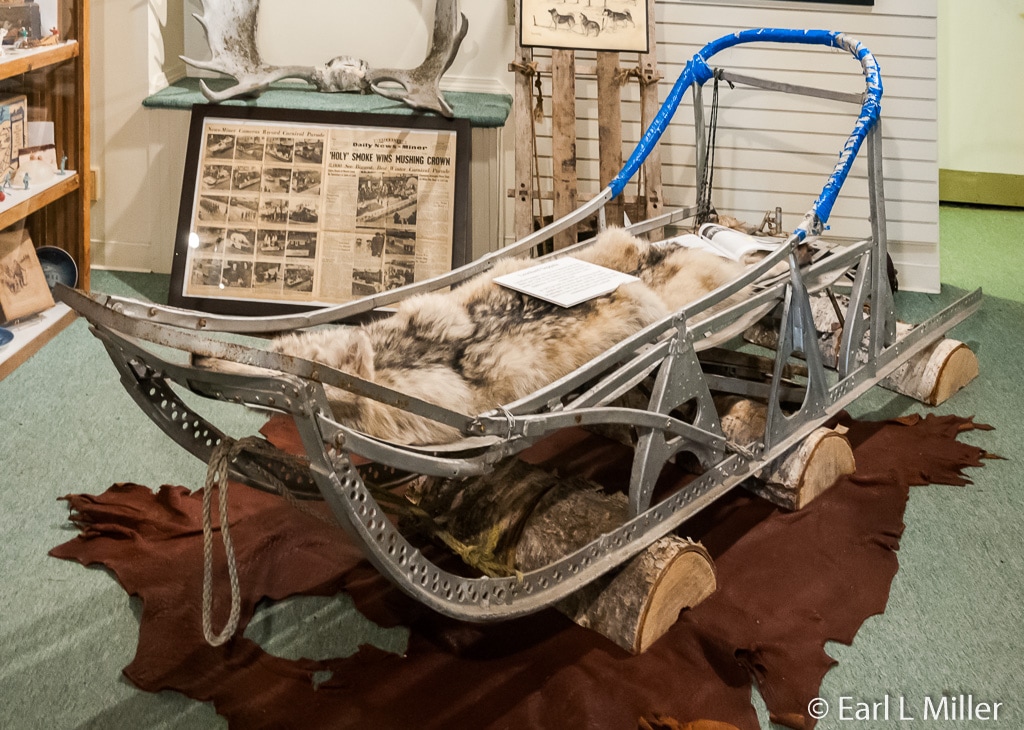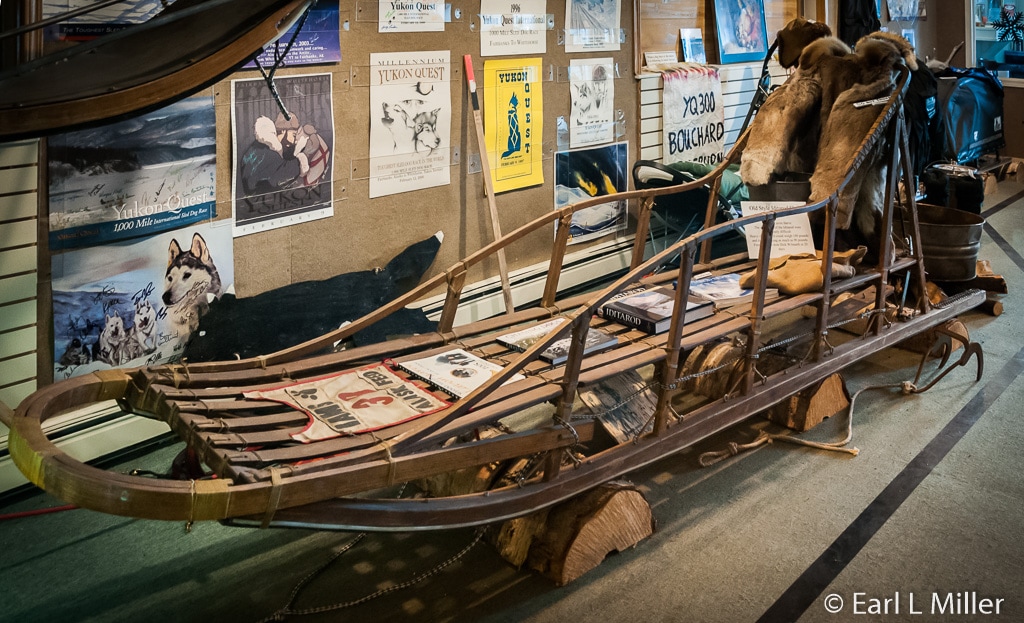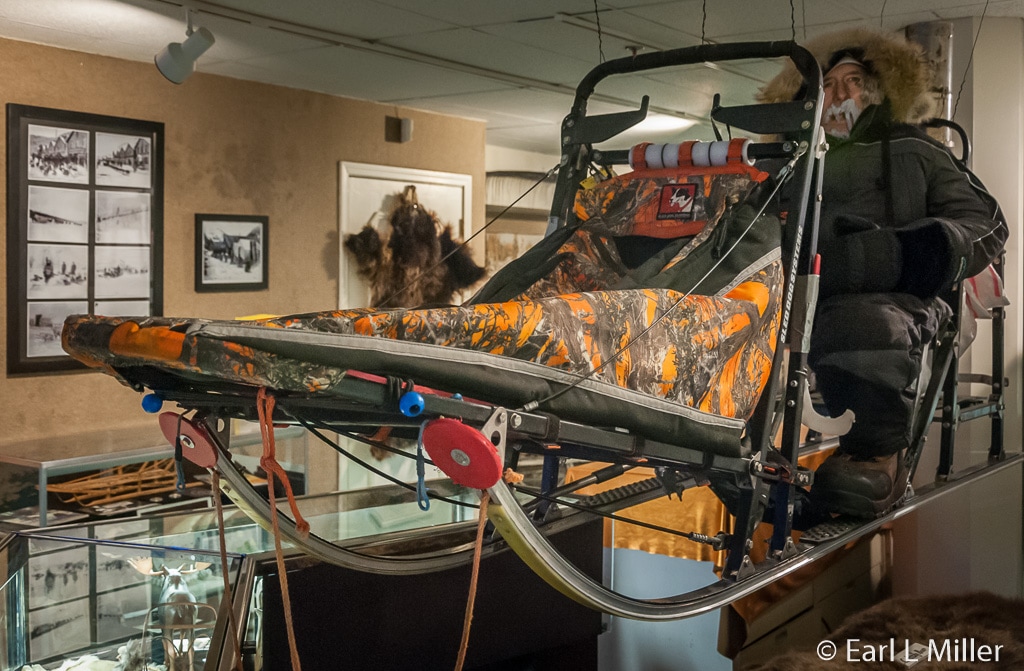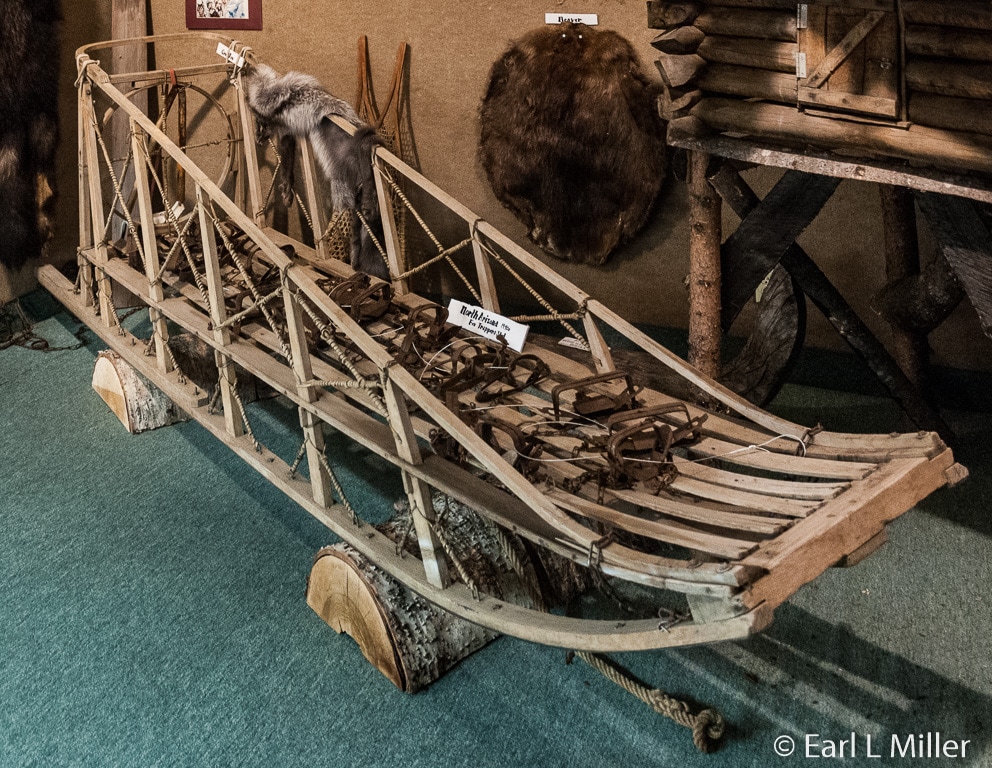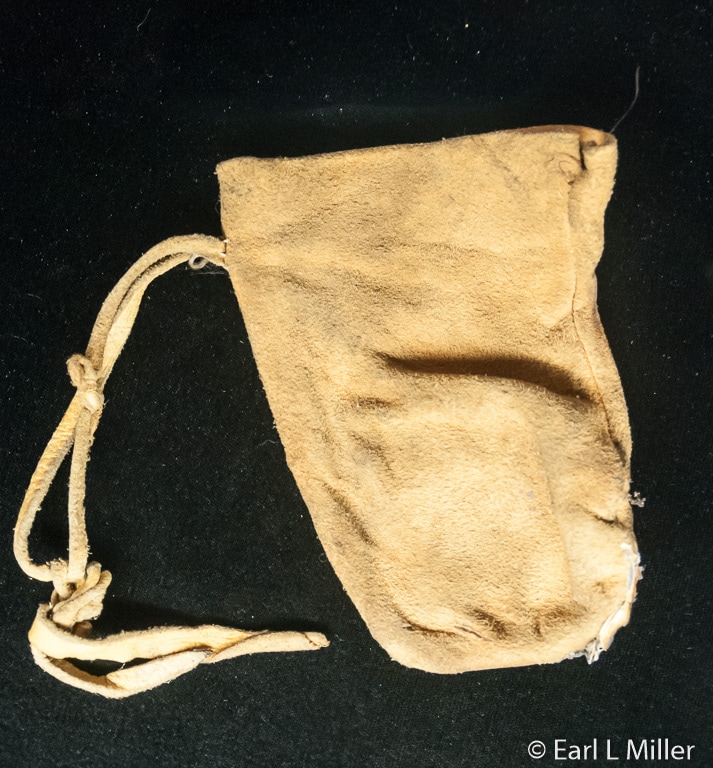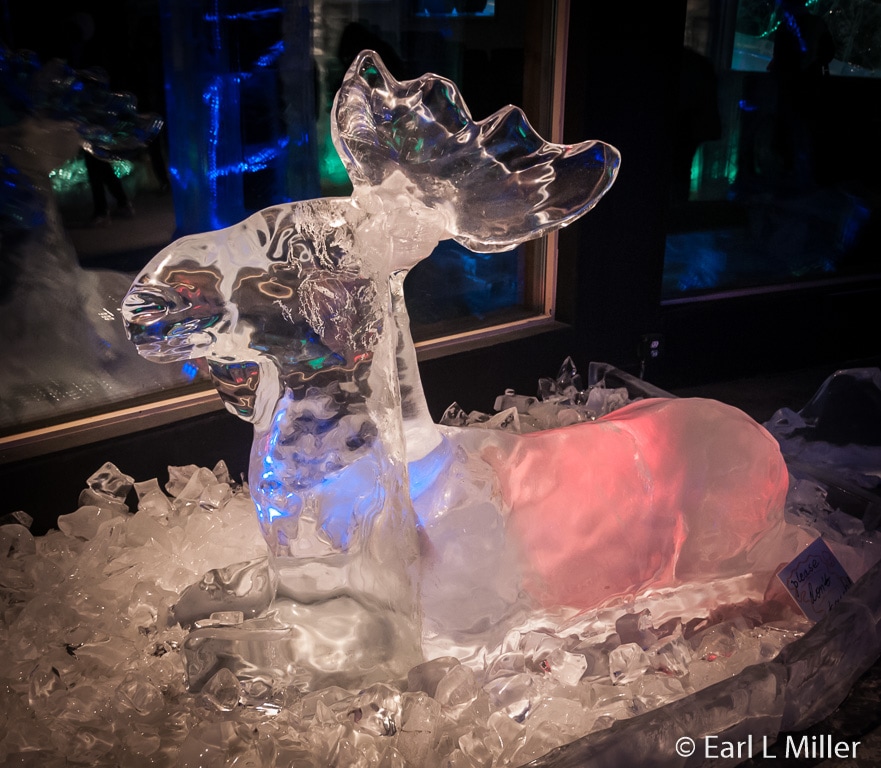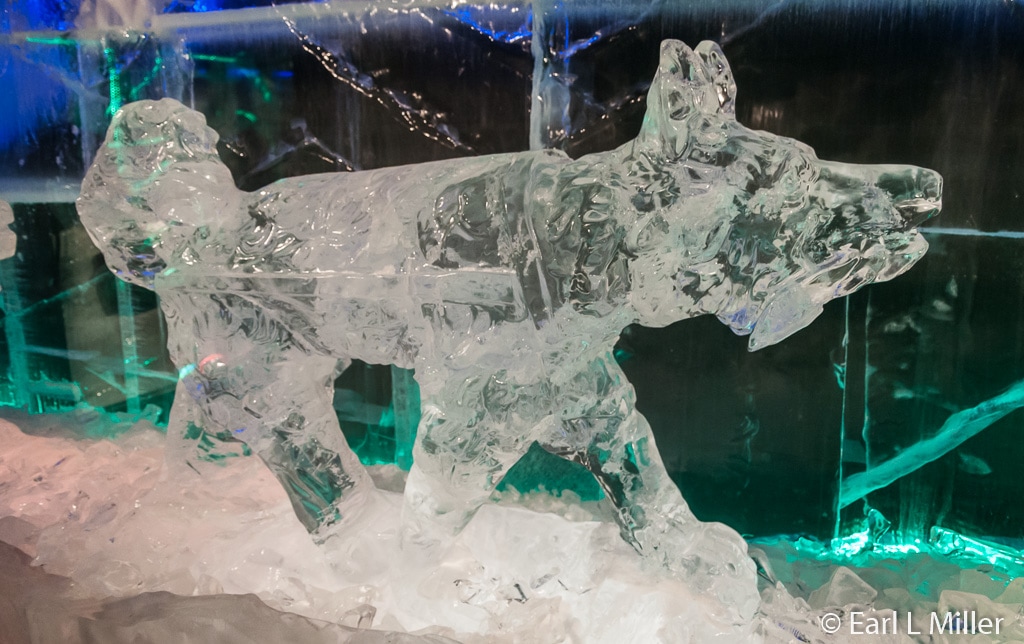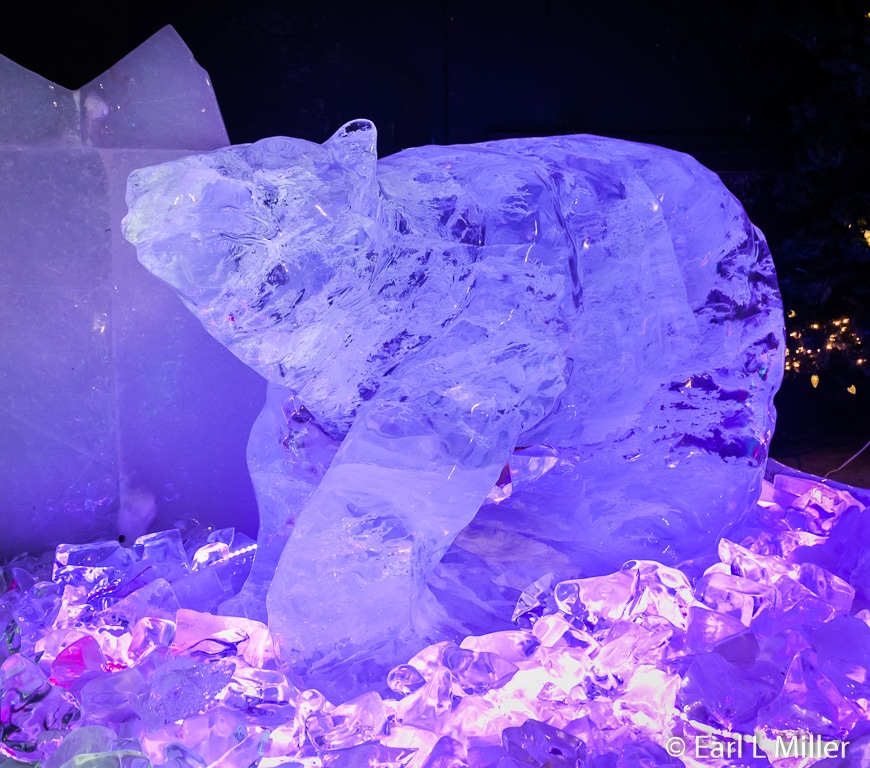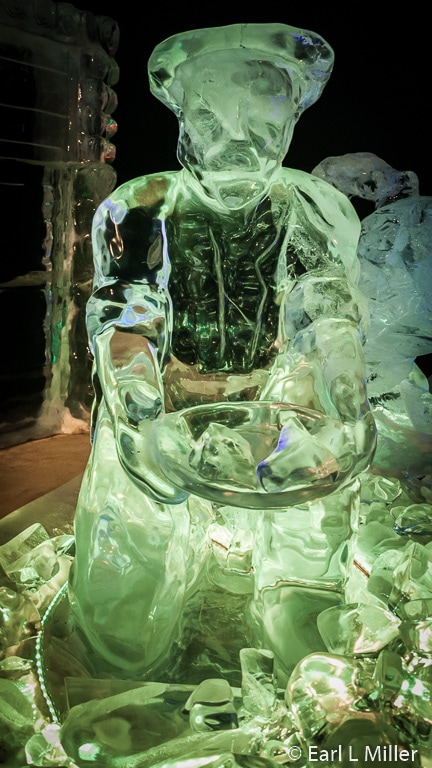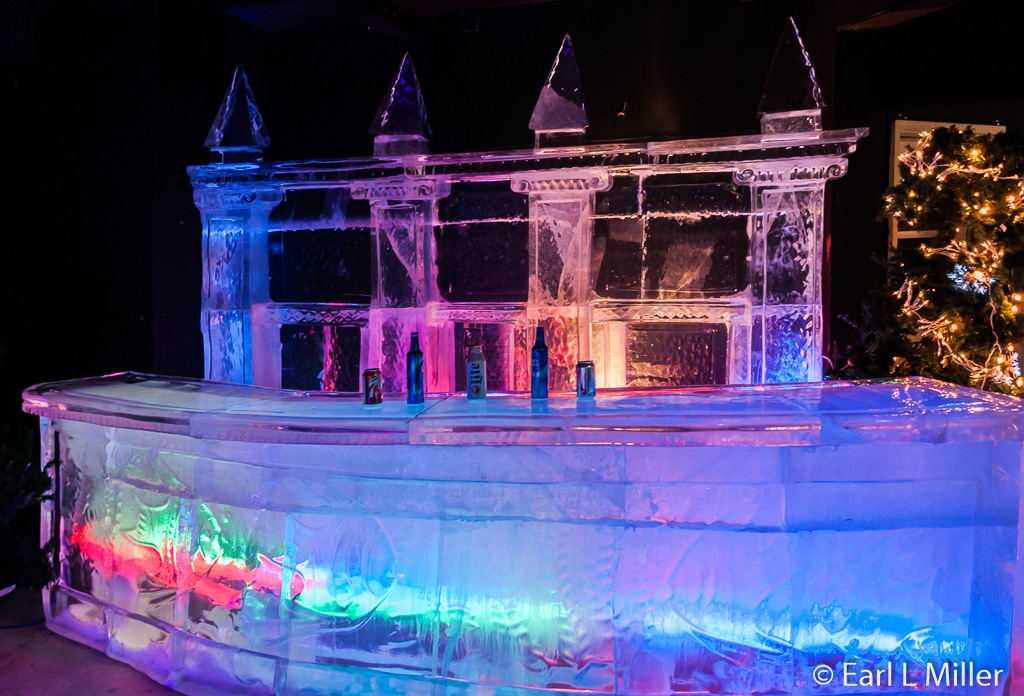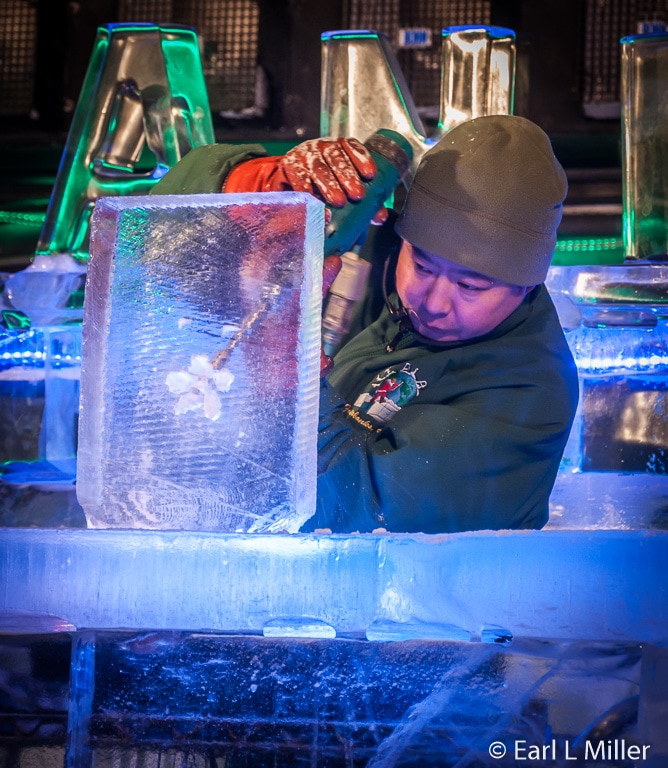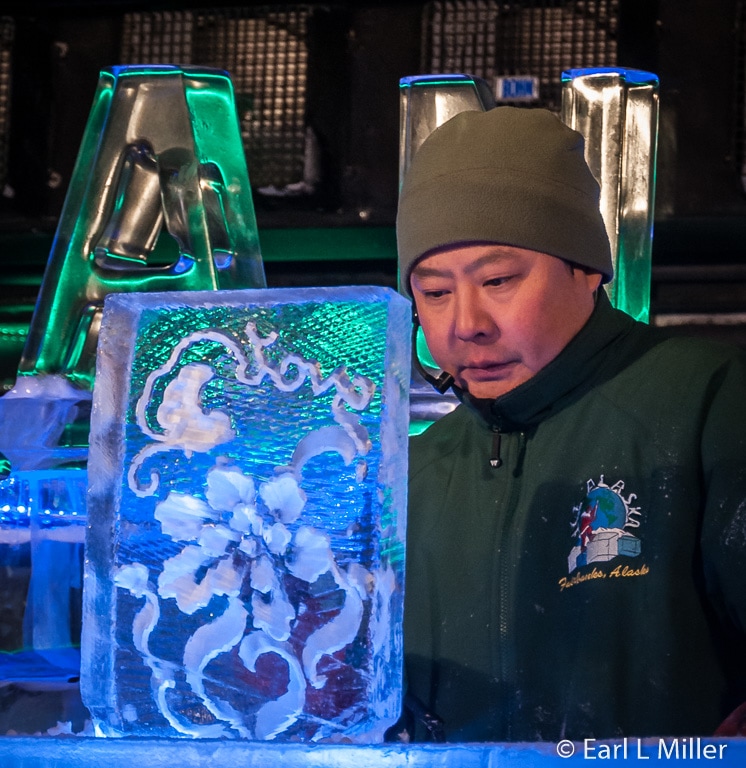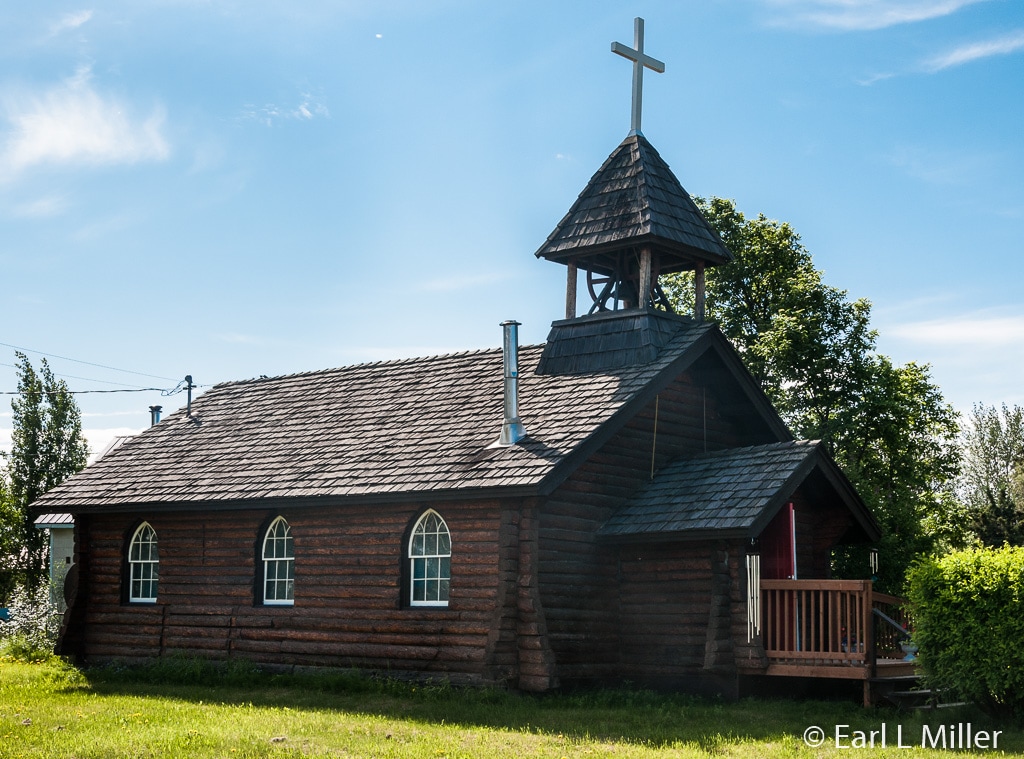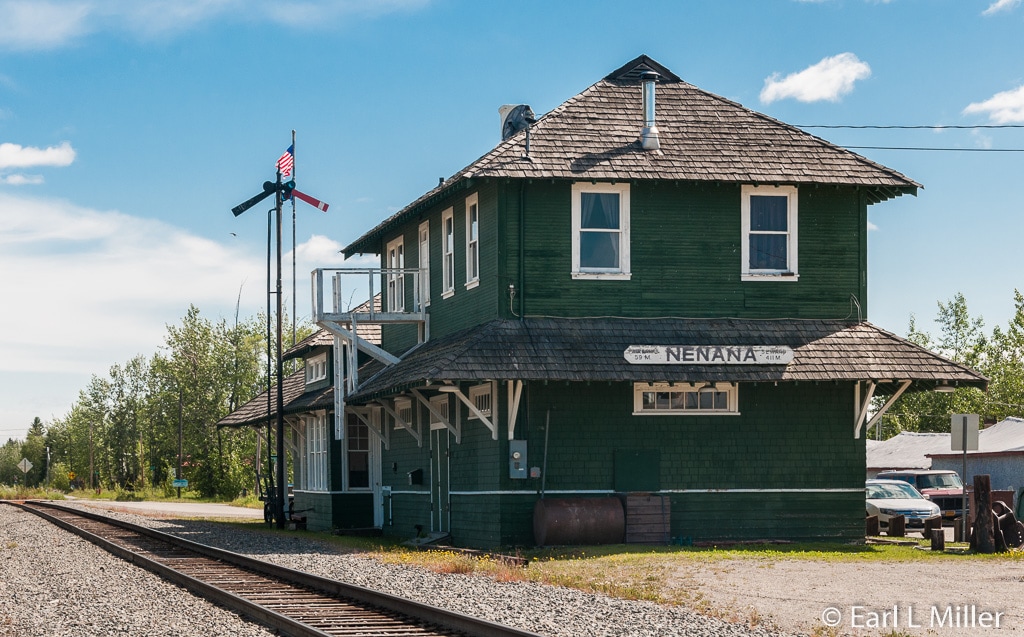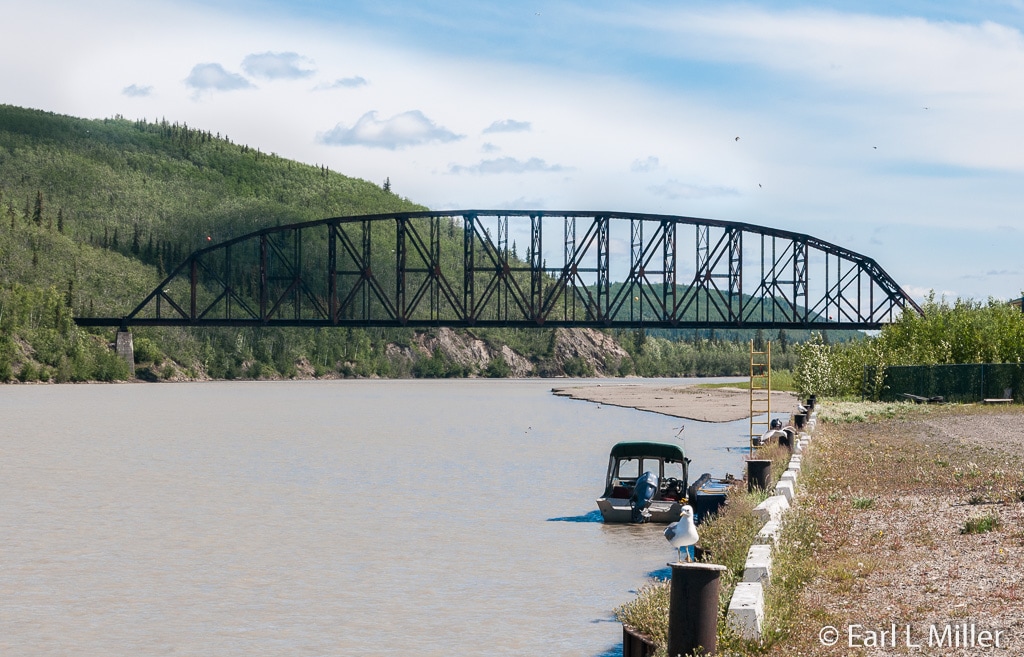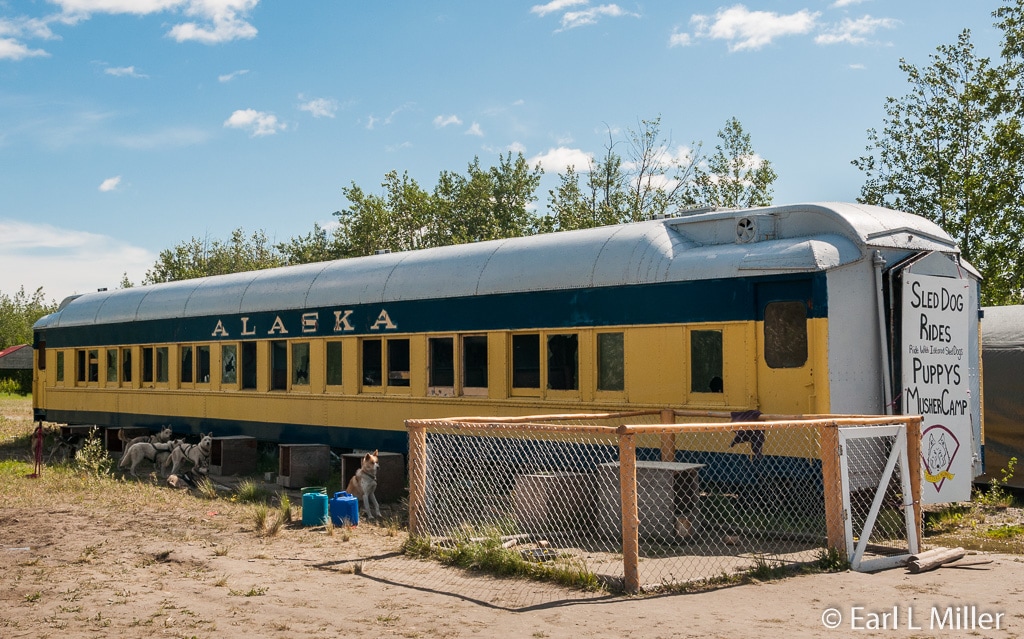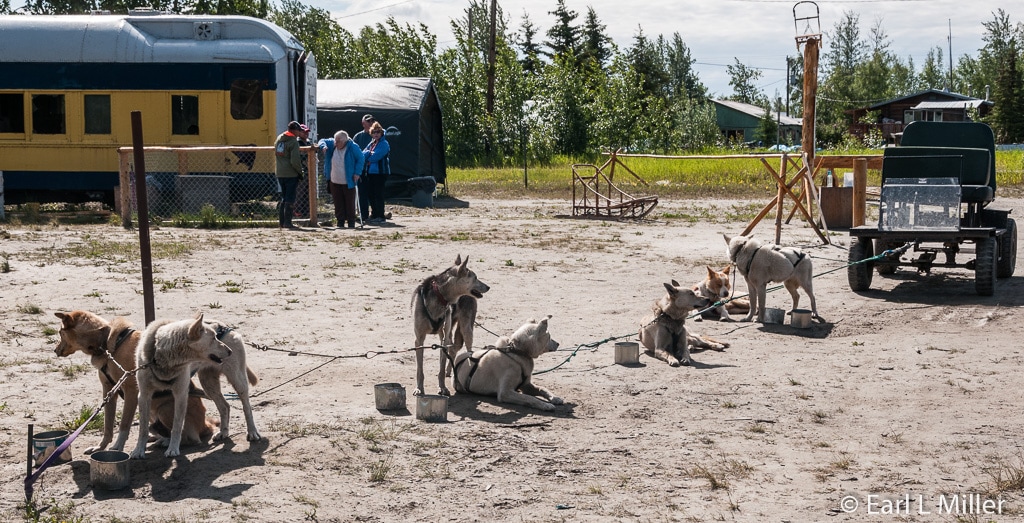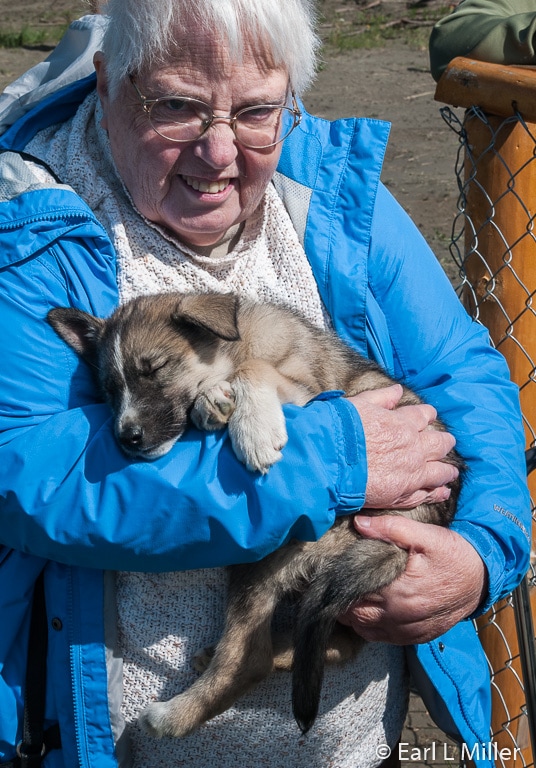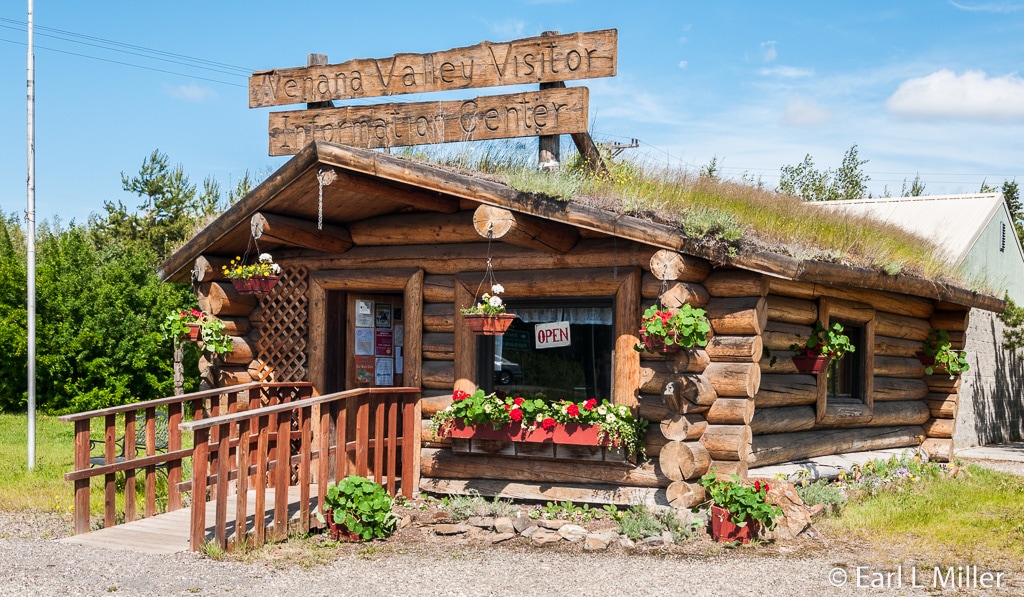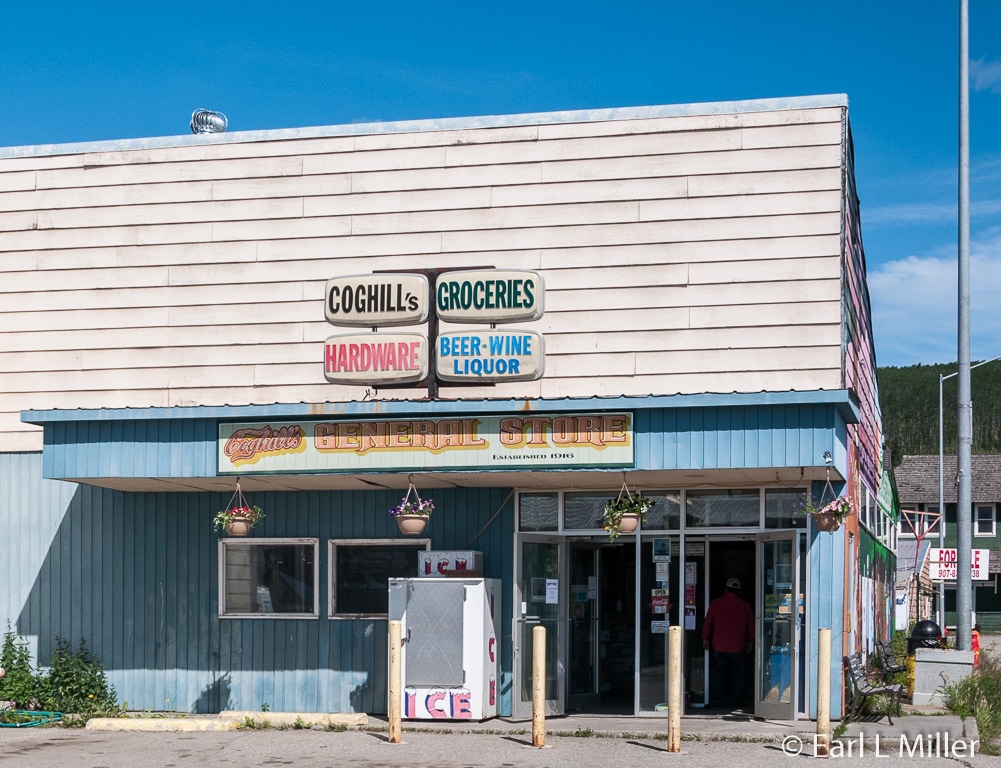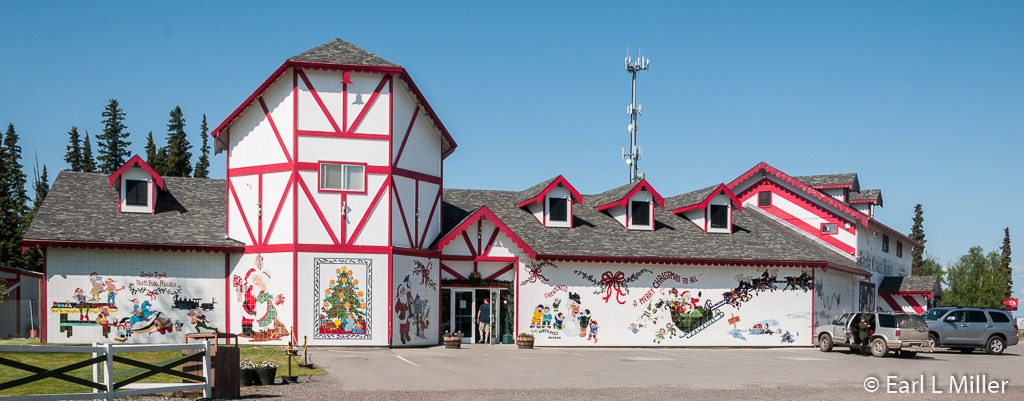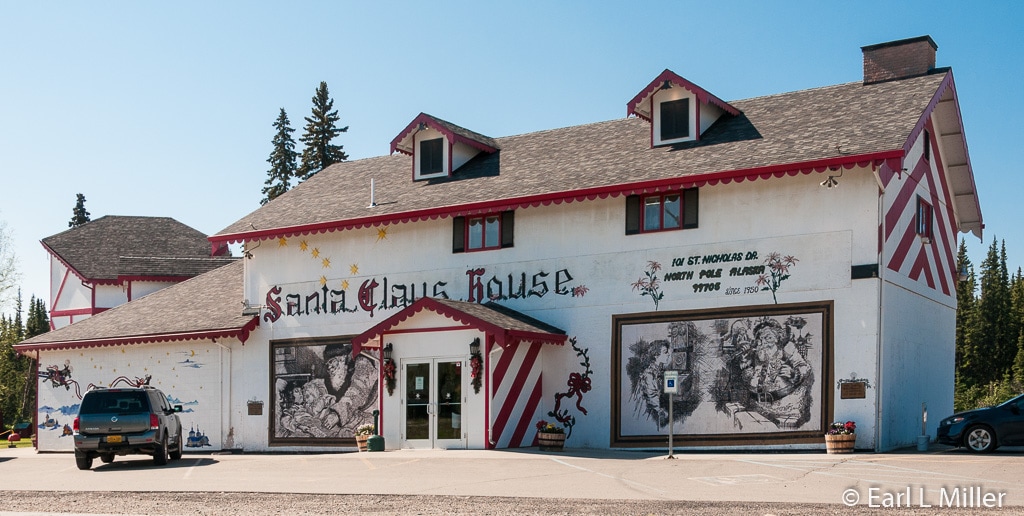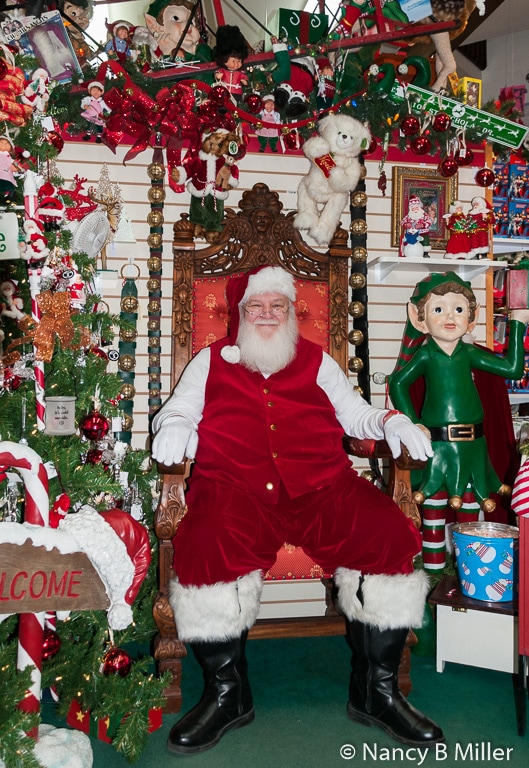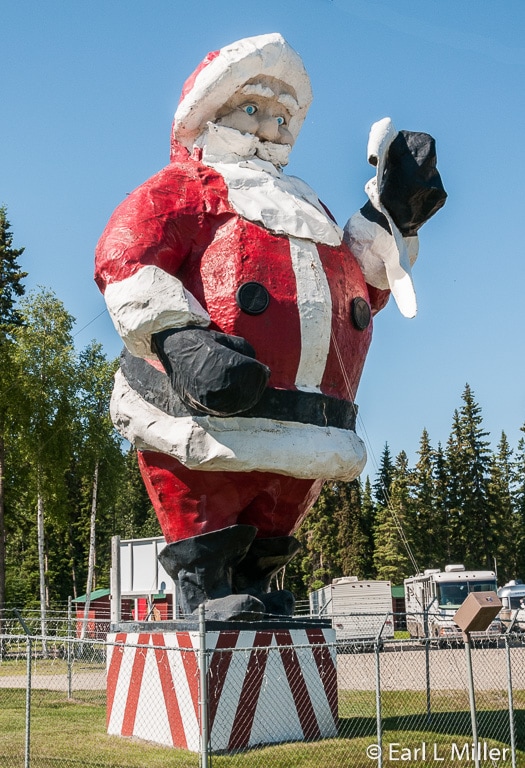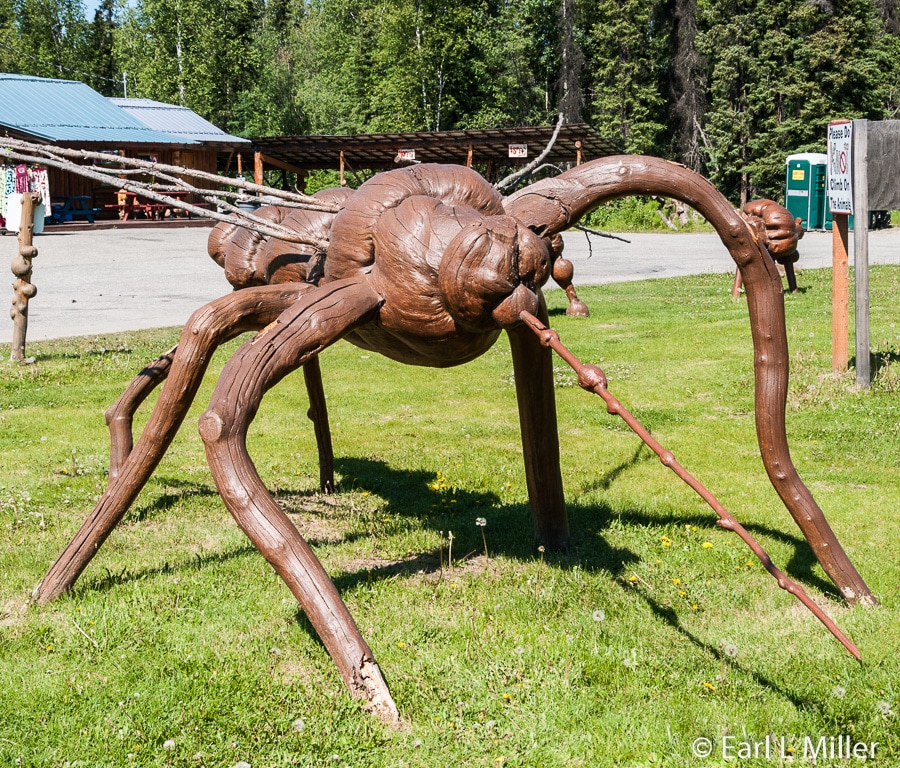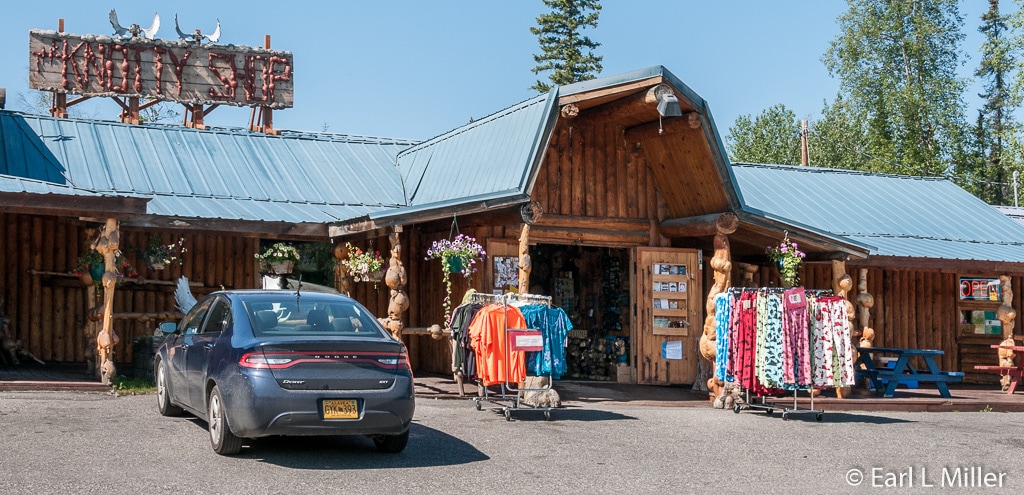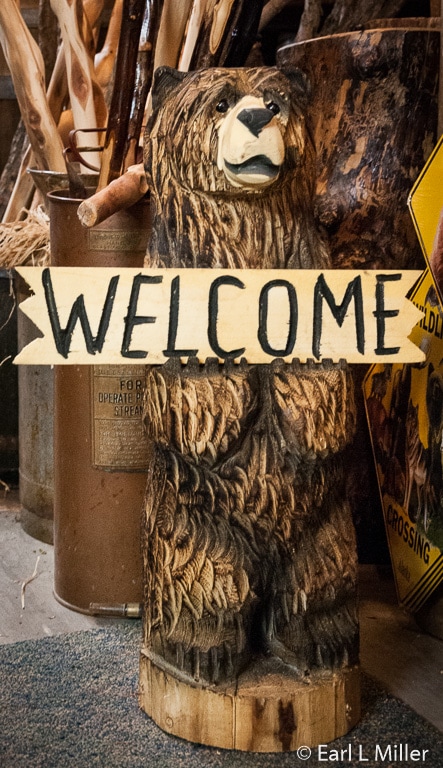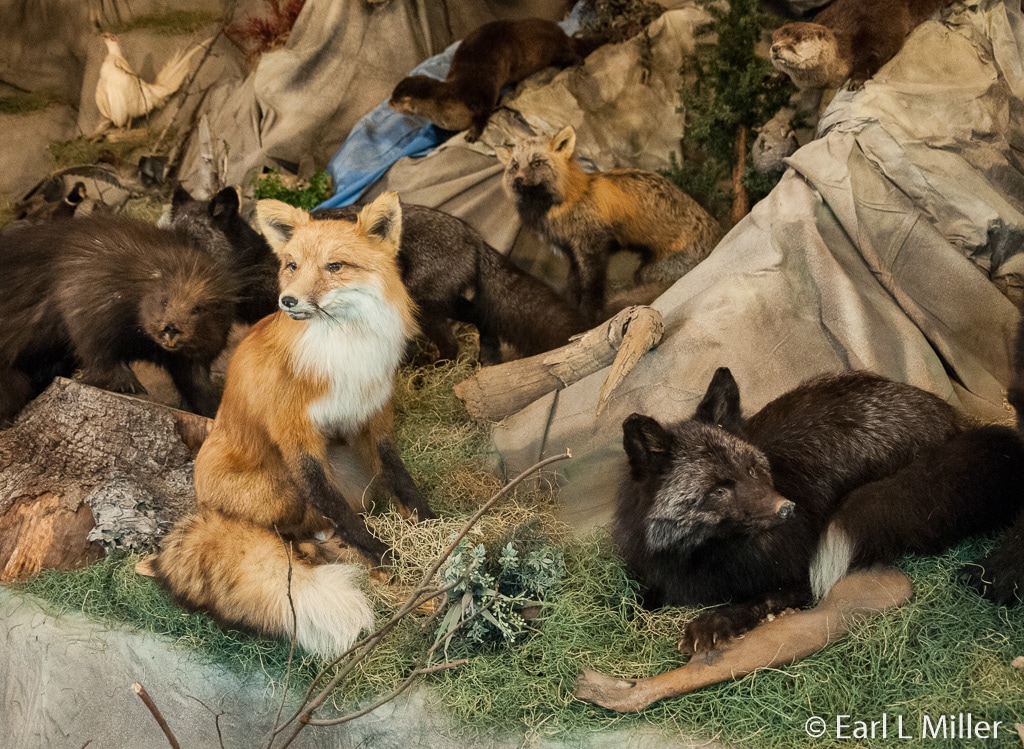Hello Everyone,
Those visiting Fairbanks in 2016 discovered the city offered two unusual attractions: Kiya Bouchard’s Dog Mushing Museum and the Fairbanks Ice Museum. Many also learned day trips to nearby North Pole, Salcha, and Nenana, Alaska were worth it.
DOG MUSHING AND SLED MUSEUM
In 2015, this museum, which is dedicated to Alaska’s state sport, moved from Dawson City, Yukon to Fairbanks. At its new home, more than 1,000 international artifacts crammed into a 5,000 foot area. With items from Alaska, Canada, Greenland, Finland, Russia, and Japan, owner Kiya Bouchard touted it as the largest dog mushing collection in the world.
A variety of sleds are downstairs. Heavy wooden sleds hauled freight or mail while smaller lightweight ones were used in races such as the Yukon Quest and the Iditarod. One was Bouchard’s racing sled composed of aluminum and plastic.
Near the freight sled was one of Lance Mackey’s. Mackey won four Iditarods from 2007 to 2010 and four Yukon Quests from 2005 to 2008. His father, Dick Mackey, who won the 1978 Iditarod by one second, was one of that race’s founders.
Leonard Seppala played a pivotal role in delivering diphtheria serum to Nome in 1925 with his lead dog Togo. He participated in the 1932 Winter Olympics where sled dog racing was a demonstration event. In 1952, he built six sleds out of aircraft surplus parts from the Boeing plant. The one at this museum may be the only one of these left.
Several harnesses hung from the museum’s ceiling. These ranged from some cut from a single, unbroken piece of bear skin, custom fitted to each dog, to much heavier leather harnesses used during the Gold Rush. Nylon is now used.
We headed upstairs to watch the movie “Yukon Race.” It was a 20-minute film about the 2005 Yukon Quest, portraying the race and revealing the involved dog care. In this race, 31 racers and 434 dogs ran from Whitehorse to Fairbanks.
On the second floor, we found small models of sleds and kayaks, a model of a sled dog system with a musher, and old style leather dog boots. All dogs wear little booties when racing to protect their feet, but today they are made of nylon. One sled upstairs was a 1940's fox trapper’s sled from Northern Arizona.
Bouchard claimed she displayed the largest collection of mushing related toys in the world including a version of Monopoly signed by Iditarod mushers. Other toys consisted of Eskimo dolls, an Alaskan native toy sled, a model size fish wheel, and model kayaks.
Admission in 2016 was $10 for ages eight and older. It included a 25-minute guided tour by Bouchard who spoke about such topics as dog training, how sleds are built, and how racers survive the Iditarod. Since our visit, the museum closed at 519 First Avenue. Word from the Fairbanks Convention and Visitors Bureau is that it may reopen later at a different location. Stay tuned for more details because it was worth the time.
FAIRBANKS ICE MUSEUM
This museum, at the former Lacey Street Theatre, is dedicated to the creation and display of ice sculptures. Even the building is special. It was one of a chain of movie theaters constructed by Austin E. “Cap” Lathrop across Alaska and one of two located in Fairbanks. It closed in 1981 and was repurposed to house the museum in 1992. Built in 1939, it’s noted as an Art Deco architectural showpiece. In 1990, it was listed on the National Register of Historic Places.
The museum is operated by Ice Alaska, a non profit organization hosting the World Ice Art Championships in Fairbanks in late February and March. At the Ice Museum, you first watch a 24-minute film, “Freeze Frame: The Making of Ice Art.” It relates the story of these championships providing details of the various events and how the ice is sculpted.
The competitions are held at the George Horner Ice Park for two weeks with the sculptures remaining on display through the end of March. For 2017, the 29th annual competition begins Monday, February 27. Admission is $15 for adults, $8 for ages 6-12, and free for those ages five and under.
Most other ice sculpting competitions use commercially manufactured ice blocks that are approximately 2' x 4' x 2'. The World Ice Art Championships use a total of 1,500 blocks of naturally formed ice harvested from local ponds. These measure 3'x8'x5' and weigh more than five tons. Final creations can weigh up to 20 tons and measure up to 25 feet tall.
Since the Alaskan Interior’s winter temperatures are so cold, ice forms quickly and densely giving it a slight glacial blue tint. It’s also very clear. For example, you can read a newspaper through a four foot block of ice. Sculptors have referred to Fairbanks ice as the best ice in the world for sculpting.
The technique is to glue ice pieces together with slush being used as the mortar. Most of the ice is sawed, chipped, and brushed away to form the desired sculpture. It’s similar to working with a block of wood or stone but only takes a few days. Many tools are used. Customized chisels add shape to the ice blocks. An iron, spatula, or dental drill adds details.
The competition consists of three events. Two person teams do the Single Block Classic. The sculpture is worked on blocks of 3'x5'x8' for 2-1/2 days. They are allowed one block of ice.
The Fairbanks Open allows amateur artists to work along side of the professionals.
Four man teams comprise the Multi-Block Classic. They sculpt 12 blocks of ice that is 3'x3'x4' over 5-1/2 days. These are stacked by forklifts under the artists’ direction. Scaffolding is provided.
Events are international with more than 27 countries participating. The first foreign sculpture was by China in the 1980's. Ice sculpting is also part of the Winter Olympics as a cultural competition. The United States team scoring the highest in Fairbanks will go to Korea’s winter games in 2018. Representatives from the United States were previously sent in 1998.
At the competition, youngsters can participate at a playground that includes a giant ice slide or an ice elephant to crawl on. All ages appreciate that after the sculptures are complete, carvings, including animal and fantasy shapes, are lit up with colored theatrical lights.
After watching the movie, you enter the room, Ice Showcase, kept at a consistent 20 degrees Fahrenheit, to view more than 100 sculptures. We spotted a reindeer, a huskie team, a bear, a miner, a giant slide, and a bar.
Afterwards, Andy (An, Zhe) from Harbin, China demonstrates ice carving. He has won numerous awards in the Fairbanks BP Ice Art championships. On our visit, Andy worked with a block of ice to sculpt a flower with the word “love.” He used a drill to carve, a chisel to cut the ice, and snow to polish to make the ice clearer.
A separate show at this museum is “Aurora - The Crown of Lights.” It’s a 40-minute video of the northern lights synchronized to music by Leroy Zimmerman. A photographer for more than 40 years, Zimmerman traveled the globe capturing images of the Aurora Borealis. A Newsminer review bills the show as “a wide-screen, Panoramic, visual masterpiece.” Earl was so awed by this spectacular show that it was weeks before he stopped talking about it.
You will find Fairbanks Ice Museum at 500 Second Avenue. For more information, the telephone number is (907) 451-8222. Admission is $10 for the Aurora Experience. For the Ice Alaska show, it’s $15 for adults, $14 for senior and military, and $10 for children ages 6-17. Combination tickets are available at $20 for adults and $12 for children. Call them for hours.
LA QUINTA INN
We stayed at La Quinta Inn and Suites, Fairbanks whose 113 rooms were recently refurbished. The room had two queen beds, a flat screen television, small refrigerator, hair dryer, tea and coffee making facilities and a microwave. A hot breakfast is complimentary. A laundry, fitness room, business center, and gift shop are on premises. Airport transfers and a wake-up service are available upon request. Staff is friendly and accommodating. Wireless Internet is excellent.
Location is ideal since it is close to restaurants, downtown, the airport, and Pioneer Park. Riverboat Discovery is next door. Room rates vary depending upon the time of year.
We did not like their on premises restaurant, The Finish Line. The menu was limited in scope, the food overpriced and poorly prepared, and the service snail paced at best. After eating there once, I refused to return.
La Quinta is located at 4920 Dale Road. Their telephone number is (907) 328-6300.
DINING SUGGESTIONS
It is important to keep in mind that you will pay more for food in Alaska with few exceptions. We found that KFC Fill Up dinners were $8.79 each that sell for $5.50 in Mesa, Arizona.
We ate several meals at Denny’s, at the chain’s most northernmost restaurant in the world. Prices were similar to what I pay in Arizona which was a surprise. The menu was the same as was the food which wasn’t gourmet. Service was mixed, ranging from pathetic to very good. The restaurant is located at 1929 Airport Way. The telephone number is (907) 451-8950. It’s open 24 hours a day.
A good family restaurant is Sam’s Sourdough Café. It’s a low-key neighborhood fixture supplying American comfort food and all-day breakfasts. A nice touch is the reindeer sausage. Prices are reasonable, with many dinners at $12.95, though their desserts are a little high. Seniors receive a 10 percent discount. Hours are 6:00 a.m. to 10:00 p.m. daily. The address is 3702 Cameron Street and the telephone number is (907) 479-0523.
Turtle Club, in business for 40 years, is promoted by locals as the best prime rib in the area. It is located 10 miles out of town. All dressings, salads, bread, and desserts are homemade. The menu is limited - a salad bar, baked potato, different sizes of prime rib ranging from $25.95 to $41.95. They do have some seafood: lobster, crab, halibut, and prawns. No choices exist for vegetables. My prime rib was half fat and overcooked. I had asked for medium rare and it came well done. Earl thought his was average. Hours are Monday through Saturday 6:00 to 10:00 p.m. and on Sunday from 5:00 to 9:00 p.m. Their address is 2098 Old Steese Highway North and their telephone number is (907) 457-3883.
The best restaurant we found in Fairbanks was Big Daddy’s BBQ. It’s definitely a local place. I promise that you can’t eat it all as the portions are huge. From the pulled pork sandwich to the chicken and ribs combo, this restaurant serves excellent prize winning BBQ. The service was good then died out when we were ready for the check. The cost is average. Hours are 11:00 a.m. to 10:00 p.m. Monday through Saturday and noon to 9:00 p.m. on Sunday. The telephone number is (907) 452-2501 while the address is 107 Wickersham Street, downtown.
NENANA
For an interesting day excursion, head for Nenana located 55 miles southwest of Fairbanks on the George Parks Highway. The town was named for the river and for the Nenana people who live nearby. Starting in 1838, Russians bartered western goods for furs from here from the natives. It is now one of interior Alaska’s largest ports.
Around 1905, the Army Signal Corps built a telegraph station as part of the network across Alaska. That same year, a trading post was established, and the Episcopal Church built St. Mark’s Episcopal Mission which still stands. It has services at 11:00 a.m. on Sunday and at 8:00 p.m. on Wednesdays.
The first railroad survey party arrived in 1916. With the construction of the Alaska Railroad, the population quickly grew. By the early 1920's, five thousand people lived in Nenana. The railroad connected Nenana to Anchorage, and the city became incorporated in 1921. In 1925, it was the starting point for the serum run to Nome, after the diphtheria antitoxin had been transported by rail from Anchorage. From Nenana, dog sleds carried it to Nome to treat the epidemic.
The railroad has always been vital in Alaska’s history. Its importance has been illustrated in reviving Alaska Interior mining during the 1920's, during World War II, and for the construction of the Trans-Alaska Oil Pipeline. The vast majority of Alaskans live near its rails.
Visitors can tour the railroad depot housing the Alaska State Railroad Museum with railroad memorabilia and local artifacts. It was completed in 1923, restored in 1988, and is on the National Register of Historic Places. You can also view two 1923 Pullman cars nearby.
The Mears Memorial Bridge is the 700–foot-long railroad truss bridge over the Tanana River. It was the final link in the railroad between Nenana, Fairbanks, and Seward, Alaska. The first train crossed it in February 9, 1923, a year after the rest of the 470-mile line was completed.
The bridge was named after Frederick Mears, chairman and chief engineer of the Alaska Engineering Commission (AEC), the railroad’s builder and original operator. The AEC designed and built almost the entire railroad except for the Tanana River crossing. They hired the Chicago firm of Modjeski and Angier to design it and American Bridge to fabricate and erect it.
On July 15, 1923, President Harding arrived with three cabinet members including Secretary of Commerce Herbert Hoover as well as the Speaker of the U.S. House of Representatives. Harding drove the golden spike at the north end of the bridge signifying the Alaska Railroad’s completion. The golden spike is no longer there since it was presented to Mears that day after an iron one was installed. A monument, east of the railroad depot, marks this event.
When constructed in 1922-1923, Mears Memorial Bridge was the longest railroad bridge in the United States and its territories. It’s still the longest span in Alaska and the third- longest simple truss bridge in the United States.
The 1960's and 1970's were also important to Nenana. In 1961, Clear Air Force Station was constructed 21 miles southwest of town. Although a road was constructed to Clear, northbound vehicles had to be ferried across the Tanana River. A $6 million dollar highway bridge across the Tanana River for vehicles was completed in 1967. This provided a modern road link to Fairbanks and replaced the river ferry. In 1971, the George Parks Highway provided a better route to Anchorage.
A special event each winter is the Nenana Ice Classic, a nature-based lottery sometimes exceeding $300,000 in prize money. Entrants pay $2 to record their best guess when the ice on the Tanana River will break up. A large striped tripod is placed on the frozen river and is connected to a clock. The winner is determined by whoever comes closest to guessing the exact time when the ice weakens enough for the tripod to move and stop the clock. Surveyors for the rail line from Seward to Fairbanks started this tradition in 1917.
Near the Pullman Cars, you’ll find Bill Cotter. He has been racing sled dogs since 1971 and has competed in more than 150 sled dog races of all lengths in Alaska. His best finish in 20 Iditarods was third in 1995. He won the Yukon Quest in 1987. Cotter has received the Alaska Airlines Humanitarian Award four times. The award is presented to a top 20 team best demonstrating “outstanding dog care while remaining competitive” throughout the Iditarod.
During the summer, he brings some of his Alaskan huskies from his kennel to town and is available to answer questions on their training and care. For $10, you can hitch a ride on a cart pulled by these sled dogs. He also had some of his six week old puppies available for holding, petting, and photographing. They begin training at six months and by 1-1/2 years have become sled dogs. Other mushers also make their home in this area.
For information and questions, stop at the photographic Nenana Visitor Center. It’s a log cabin with a sod roof. Look for its colorful flowers when it’s open during the summer from Memorial Day weekend through Labor Day.
The Alfred Starr Cultural Center and Museum houses information on the local Athabascan culture, the railroad, and the Ice Classic. Open summer daily 10:00 a.m. to 6:00 p.m., winter only by appointment. Admission is by a donation.
I was told by Marilyn Duggar, the owner of Coghills, the town’s general store, that it was started by her grandfather in 1916 and is either the oldest store in Alaska or the store run the longest by the same family. They sell all kinds of merchandise. “If we don’t have it, you don’t need it,” said Duggar.
NORTH POLE
In 1953, the town of Davis, Alaska changed its name to North Pole and adopted the slogan, “Where the Spirit of Christmas Lives Year Round.” The town, 13 miles south of Fairbanks, contains the most northernmost Santa themed tourist attraction - Santa Claus House.
The town of North Pole is enchanting. Street lights and signs, even some stores, are decorated in a candy cane motif. Streets are appropriately named Santa Claus Lane, St. Nicholas Drive, Snowman Lane, and Kris Kringle Drive. City fire trucks and ambulances are all red while police cars are green and white. A red-and-white North Pole is in the town park. During the Christmas season, the town receives mountains of mail from all over the world answered by a Santa or SASE’s postmarked from the North Pole.
Santa Claus House started when Con and Nellie Miller arrived in Fairbanks in 1949 with $1.40 in their pockets and two hungry children in the car. Con soon became a merchant and fur buyer in the surrounding villages. He also earned celebrity status acting as the area’s first Santa Claus. By 1952, they decided to build a trading post in the area now called “North Pole. ”
One day, Con was recognized by a boy who asked him if Santa was building a new house. That gave the store its name. During its early days, Santa Claus House offered mostly basic necessities rather than a Christmas theme. It was also a mail contract station and served as North Pole’s post office for almost 20 years under Postmistress Nellie’s direction. In 1972, when the state rerouted the Richardson Highway to bypass the store, the Millers built a new storefront at the store’s current location. It is now a regular stop for bus tours and individual travelers.
The Miller family has been strongly committed to their community. Con Miller served 19 years as mayor of North Pole (the city’s longest acting mayor.) Nellie Miller was Marriage Commissioner marrying thousands of couples inside Santa Claus House.
You’ll recognize Santa Claus House by the 900 pound, 42-foot tall Santa touted as the world’s largest. He stands on Richardson Highway. He was built by Wes Stanley of Stanley Plastics in Enumclaw, Washington. He was seen near the Space Needle for the 1962 World’s Fair and later at Seattle’s Westlake Mall. In 1976 during the holidays, Santa spent time in Anchorage in front of the Federal Building.
In 1978, Santa Claus House bought this fiberglass creation. However, he was not brought to the North Pole until 1983. Originally, there were three Santas. One went to Portland, Oregon while the other to Nampa, Idaho. The current whereabouts of those other two are unknown.
On property, you’ll find Santa’s live reindeer - everyone from Dasher to Dancer. Enter this 9,000 square foot gift store and you’ll discover lots of items such as magnets, cups, sweatshirts, and T shirts with the words “North Pole", tons of Christmas ornaments and collectibles, jewelry, Alaska gifts, and toys. Sip an espresso at the coffee shop or try the homemade fudge.
Look around and you may find Santa Claus in his chair ready to speak to adults and children. Since 1952, the store has sent out personalized letters with the recipient’s name printed on Santa Claus stationery. Each comes with a Santa Claus dollar, a photo of Santa Claus, sticker proclaiming the bearer to be on Santa’s Good List, “Santa’s Official Mail” seal, and a North Pole postmark. Numerous letter styles are available. In addition, it’s possible to purchase a genuine deed to a one square inch of North Pole property.
Santa Claus House is at 101 St. Nicholas Drive. The telephone number is (800) 588-4078. Hours change seasonally. However, from Memorial Day to Labor Day it’s daily 8:00 a.m. to 8:00 p.m.
THE KNOTTY WOOD SHOP
At Salcha, 32 miles south of Fairbanks, travelers find the Knotty Shop which has been in business since 1983. It’s at 6565 Richardson Road. To reach them, call (907) 488-3014.
Take time to admire the carved, Alaskan creatures, including a big mosquito, on the front lawn then go inside. I was immediately attracted to the bears carved from knotty wood at the store’s front. They held “Welcome” and “Go Away” signs. Inside the store, staff sells everything from reindeer sausage to pottery, jewelry, Alaska-logo items, and signs surrounded by knotty wood.
The shop is well known for their ice cream which comes in 12 flavors including some unusual ones like lemon meringue pie. At the rear, an extensive taxidermy exhibit showcases Alaska’s mammals. Check out the 50 antique guns, the 25-foot burl counter, and large selection of mounted ptarmigan and grouse. You’ll also find a selection of crafts from local artists. Even the building is of burl construction. It’s worth a stop. Hours change seasonally.
Those visiting Fairbanks in 2016 discovered the city offered two unusual attractions: Kiya Bouchard’s Dog Mushing Museum and the Fairbanks Ice Museum. Many also learned day trips to nearby North Pole, Salcha, and Nenana, Alaska were worth it.
DOG MUSHING AND SLED MUSEUM
In 2015, this museum, which is dedicated to Alaska’s state sport, moved from Dawson City, Yukon to Fairbanks. At its new home, more than 1,000 international artifacts crammed into a 5,000 foot area. With items from Alaska, Canada, Greenland, Finland, Russia, and Japan, owner Kiya Bouchard touted it as the largest dog mushing collection in the world.
A variety of sleds are downstairs. Heavy wooden sleds hauled freight or mail while smaller lightweight ones were used in races such as the Yukon Quest and the Iditarod. One was Bouchard’s racing sled composed of aluminum and plastic.
Near the freight sled was one of Lance Mackey’s. Mackey won four Iditarods from 2007 to 2010 and four Yukon Quests from 2005 to 2008. His father, Dick Mackey, who won the 1978 Iditarod by one second, was one of that race’s founders.
Leonard Seppala played a pivotal role in delivering diphtheria serum to Nome in 1925 with his lead dog Togo. He participated in the 1932 Winter Olympics where sled dog racing was a demonstration event. In 1952, he built six sleds out of aircraft surplus parts from the Boeing plant. The one at this museum may be the only one of these left.
Several harnesses hung from the museum’s ceiling. These ranged from some cut from a single, unbroken piece of bear skin, custom fitted to each dog, to much heavier leather harnesses used during the Gold Rush. Nylon is now used.
We headed upstairs to watch the movie “Yukon Race.” It was a 20-minute film about the 2005 Yukon Quest, portraying the race and revealing the involved dog care. In this race, 31 racers and 434 dogs ran from Whitehorse to Fairbanks.
On the second floor, we found small models of sleds and kayaks, a model of a sled dog system with a musher, and old style leather dog boots. All dogs wear little booties when racing to protect their feet, but today they are made of nylon. One sled upstairs was a 1940's fox trapper’s sled from Northern Arizona.
Bouchard claimed she displayed the largest collection of mushing related toys in the world including a version of Monopoly signed by Iditarod mushers. Other toys consisted of Eskimo dolls, an Alaskan native toy sled, a model size fish wheel, and model kayaks.
Admission in 2016 was $10 for ages eight and older. It included a 25-minute guided tour by Bouchard who spoke about such topics as dog training, how sleds are built, and how racers survive the Iditarod. Since our visit, the museum closed at 519 First Avenue. Word from the Fairbanks Convention and Visitors Bureau is that it may reopen later at a different location. Stay tuned for more details because it was worth the time.
FAIRBANKS ICE MUSEUM
This museum, at the former Lacey Street Theatre, is dedicated to the creation and display of ice sculptures. Even the building is special. It was one of a chain of movie theaters constructed by Austin E. “Cap” Lathrop across Alaska and one of two located in Fairbanks. It closed in 1981 and was repurposed to house the museum in 1992. Built in 1939, it’s noted as an Art Deco architectural showpiece. In 1990, it was listed on the National Register of Historic Places.
The museum is operated by Ice Alaska, a non profit organization hosting the World Ice Art Championships in Fairbanks in late February and March. At the Ice Museum, you first watch a 24-minute film, “Freeze Frame: The Making of Ice Art.” It relates the story of these championships providing details of the various events and how the ice is sculpted.
The competitions are held at the George Horner Ice Park for two weeks with the sculptures remaining on display through the end of March. For 2017, the 29th annual competition begins Monday, February 27. Admission is $15 for adults, $8 for ages 6-12, and free for those ages five and under.
Most other ice sculpting competitions use commercially manufactured ice blocks that are approximately 2' x 4' x 2'. The World Ice Art Championships use a total of 1,500 blocks of naturally formed ice harvested from local ponds. These measure 3'x8'x5' and weigh more than five tons. Final creations can weigh up to 20 tons and measure up to 25 feet tall.
Since the Alaskan Interior’s winter temperatures are so cold, ice forms quickly and densely giving it a slight glacial blue tint. It’s also very clear. For example, you can read a newspaper through a four foot block of ice. Sculptors have referred to Fairbanks ice as the best ice in the world for sculpting.
The technique is to glue ice pieces together with slush being used as the mortar. Most of the ice is sawed, chipped, and brushed away to form the desired sculpture. It’s similar to working with a block of wood or stone but only takes a few days. Many tools are used. Customized chisels add shape to the ice blocks. An iron, spatula, or dental drill adds details.
The competition consists of three events. Two person teams do the Single Block Classic. The sculpture is worked on blocks of 3'x5'x8' for 2-1/2 days. They are allowed one block of ice.
The Fairbanks Open allows amateur artists to work along side of the professionals.
Four man teams comprise the Multi-Block Classic. They sculpt 12 blocks of ice that is 3'x3'x4' over 5-1/2 days. These are stacked by forklifts under the artists’ direction. Scaffolding is provided.
Events are international with more than 27 countries participating. The first foreign sculpture was by China in the 1980's. Ice sculpting is also part of the Winter Olympics as a cultural competition. The United States team scoring the highest in Fairbanks will go to Korea’s winter games in 2018. Representatives from the United States were previously sent in 1998.
At the competition, youngsters can participate at a playground that includes a giant ice slide or an ice elephant to crawl on. All ages appreciate that after the sculptures are complete, carvings, including animal and fantasy shapes, are lit up with colored theatrical lights.
After watching the movie, you enter the room, Ice Showcase, kept at a consistent 20 degrees Fahrenheit, to view more than 100 sculptures. We spotted a reindeer, a huskie team, a bear, a miner, a giant slide, and a bar.
Afterwards, Andy (An, Zhe) from Harbin, China demonstrates ice carving. He has won numerous awards in the Fairbanks BP Ice Art championships. On our visit, Andy worked with a block of ice to sculpt a flower with the word “love.” He used a drill to carve, a chisel to cut the ice, and snow to polish to make the ice clearer.
A separate show at this museum is “Aurora - The Crown of Lights.” It’s a 40-minute video of the northern lights synchronized to music by Leroy Zimmerman. A photographer for more than 40 years, Zimmerman traveled the globe capturing images of the Aurora Borealis. A Newsminer review bills the show as “a wide-screen, Panoramic, visual masterpiece.” Earl was so awed by this spectacular show that it was weeks before he stopped talking about it.
You will find Fairbanks Ice Museum at 500 Second Avenue. For more information, the telephone number is (907) 451-8222. Admission is $10 for the Aurora Experience. For the Ice Alaska show, it’s $15 for adults, $14 for senior and military, and $10 for children ages 6-17. Combination tickets are available at $20 for adults and $12 for children. Call them for hours.
LA QUINTA INN
We stayed at La Quinta Inn and Suites, Fairbanks whose 113 rooms were recently refurbished. The room had two queen beds, a flat screen television, small refrigerator, hair dryer, tea and coffee making facilities and a microwave. A hot breakfast is complimentary. A laundry, fitness room, business center, and gift shop are on premises. Airport transfers and a wake-up service are available upon request. Staff is friendly and accommodating. Wireless Internet is excellent.
Location is ideal since it is close to restaurants, downtown, the airport, and Pioneer Park. Riverboat Discovery is next door. Room rates vary depending upon the time of year.
We did not like their on premises restaurant, The Finish Line. The menu was limited in scope, the food overpriced and poorly prepared, and the service snail paced at best. After eating there once, I refused to return.
La Quinta is located at 4920 Dale Road. Their telephone number is (907) 328-6300.
DINING SUGGESTIONS
It is important to keep in mind that you will pay more for food in Alaska with few exceptions. We found that KFC Fill Up dinners were $8.79 each that sell for $5.50 in Mesa, Arizona.
We ate several meals at Denny’s, at the chain’s most northernmost restaurant in the world. Prices were similar to what I pay in Arizona which was a surprise. The menu was the same as was the food which wasn’t gourmet. Service was mixed, ranging from pathetic to very good. The restaurant is located at 1929 Airport Way. The telephone number is (907) 451-8950. It’s open 24 hours a day.
A good family restaurant is Sam’s Sourdough Café. It’s a low-key neighborhood fixture supplying American comfort food and all-day breakfasts. A nice touch is the reindeer sausage. Prices are reasonable, with many dinners at $12.95, though their desserts are a little high. Seniors receive a 10 percent discount. Hours are 6:00 a.m. to 10:00 p.m. daily. The address is 3702 Cameron Street and the telephone number is (907) 479-0523.
Turtle Club, in business for 40 years, is promoted by locals as the best prime rib in the area. It is located 10 miles out of town. All dressings, salads, bread, and desserts are homemade. The menu is limited - a salad bar, baked potato, different sizes of prime rib ranging from $25.95 to $41.95. They do have some seafood: lobster, crab, halibut, and prawns. No choices exist for vegetables. My prime rib was half fat and overcooked. I had asked for medium rare and it came well done. Earl thought his was average. Hours are Monday through Saturday 6:00 to 10:00 p.m. and on Sunday from 5:00 to 9:00 p.m. Their address is 2098 Old Steese Highway North and their telephone number is (907) 457-3883.
The best restaurant we found in Fairbanks was Big Daddy’s BBQ. It’s definitely a local place. I promise that you can’t eat it all as the portions are huge. From the pulled pork sandwich to the chicken and ribs combo, this restaurant serves excellent prize winning BBQ. The service was good then died out when we were ready for the check. The cost is average. Hours are 11:00 a.m. to 10:00 p.m. Monday through Saturday and noon to 9:00 p.m. on Sunday. The telephone number is (907) 452-2501 while the address is 107 Wickersham Street, downtown.
NENANA
For an interesting day excursion, head for Nenana located 55 miles southwest of Fairbanks on the George Parks Highway. The town was named for the river and for the Nenana people who live nearby. Starting in 1838, Russians bartered western goods for furs from here from the natives. It is now one of interior Alaska’s largest ports.
Around 1905, the Army Signal Corps built a telegraph station as part of the network across Alaska. That same year, a trading post was established, and the Episcopal Church built St. Mark’s Episcopal Mission which still stands. It has services at 11:00 a.m. on Sunday and at 8:00 p.m. on Wednesdays.
The first railroad survey party arrived in 1916. With the construction of the Alaska Railroad, the population quickly grew. By the early 1920's, five thousand people lived in Nenana. The railroad connected Nenana to Anchorage, and the city became incorporated in 1921. In 1925, it was the starting point for the serum run to Nome, after the diphtheria antitoxin had been transported by rail from Anchorage. From Nenana, dog sleds carried it to Nome to treat the epidemic.
The railroad has always been vital in Alaska’s history. Its importance has been illustrated in reviving Alaska Interior mining during the 1920's, during World War II, and for the construction of the Trans-Alaska Oil Pipeline. The vast majority of Alaskans live near its rails.
Visitors can tour the railroad depot housing the Alaska State Railroad Museum with railroad memorabilia and local artifacts. It was completed in 1923, restored in 1988, and is on the National Register of Historic Places. You can also view two 1923 Pullman cars nearby.
The Mears Memorial Bridge is the 700–foot-long railroad truss bridge over the Tanana River. It was the final link in the railroad between Nenana, Fairbanks, and Seward, Alaska. The first train crossed it in February 9, 1923, a year after the rest of the 470-mile line was completed.
The bridge was named after Frederick Mears, chairman and chief engineer of the Alaska Engineering Commission (AEC), the railroad’s builder and original operator. The AEC designed and built almost the entire railroad except for the Tanana River crossing. They hired the Chicago firm of Modjeski and Angier to design it and American Bridge to fabricate and erect it.
On July 15, 1923, President Harding arrived with three cabinet members including Secretary of Commerce Herbert Hoover as well as the Speaker of the U.S. House of Representatives. Harding drove the golden spike at the north end of the bridge signifying the Alaska Railroad’s completion. The golden spike is no longer there since it was presented to Mears that day after an iron one was installed. A monument, east of the railroad depot, marks this event.
When constructed in 1922-1923, Mears Memorial Bridge was the longest railroad bridge in the United States and its territories. It’s still the longest span in Alaska and the third- longest simple truss bridge in the United States.
The 1960's and 1970's were also important to Nenana. In 1961, Clear Air Force Station was constructed 21 miles southwest of town. Although a road was constructed to Clear, northbound vehicles had to be ferried across the Tanana River. A $6 million dollar highway bridge across the Tanana River for vehicles was completed in 1967. This provided a modern road link to Fairbanks and replaced the river ferry. In 1971, the George Parks Highway provided a better route to Anchorage.
A special event each winter is the Nenana Ice Classic, a nature-based lottery sometimes exceeding $300,000 in prize money. Entrants pay $2 to record their best guess when the ice on the Tanana River will break up. A large striped tripod is placed on the frozen river and is connected to a clock. The winner is determined by whoever comes closest to guessing the exact time when the ice weakens enough for the tripod to move and stop the clock. Surveyors for the rail line from Seward to Fairbanks started this tradition in 1917.
Near the Pullman Cars, you’ll find Bill Cotter. He has been racing sled dogs since 1971 and has competed in more than 150 sled dog races of all lengths in Alaska. His best finish in 20 Iditarods was third in 1995. He won the Yukon Quest in 1987. Cotter has received the Alaska Airlines Humanitarian Award four times. The award is presented to a top 20 team best demonstrating “outstanding dog care while remaining competitive” throughout the Iditarod.
During the summer, he brings some of his Alaskan huskies from his kennel to town and is available to answer questions on their training and care. For $10, you can hitch a ride on a cart pulled by these sled dogs. He also had some of his six week old puppies available for holding, petting, and photographing. They begin training at six months and by 1-1/2 years have become sled dogs. Other mushers also make their home in this area.
For information and questions, stop at the photographic Nenana Visitor Center. It’s a log cabin with a sod roof. Look for its colorful flowers when it’s open during the summer from Memorial Day weekend through Labor Day.
The Alfred Starr Cultural Center and Museum houses information on the local Athabascan culture, the railroad, and the Ice Classic. Open summer daily 10:00 a.m. to 6:00 p.m., winter only by appointment. Admission is by a donation.
I was told by Marilyn Duggar, the owner of Coghills, the town’s general store, that it was started by her grandfather in 1916 and is either the oldest store in Alaska or the store run the longest by the same family. They sell all kinds of merchandise. “If we don’t have it, you don’t need it,” said Duggar.
NORTH POLE
In 1953, the town of Davis, Alaska changed its name to North Pole and adopted the slogan, “Where the Spirit of Christmas Lives Year Round.” The town, 13 miles south of Fairbanks, contains the most northernmost Santa themed tourist attraction - Santa Claus House.
The town of North Pole is enchanting. Street lights and signs, even some stores, are decorated in a candy cane motif. Streets are appropriately named Santa Claus Lane, St. Nicholas Drive, Snowman Lane, and Kris Kringle Drive. City fire trucks and ambulances are all red while police cars are green and white. A red-and-white North Pole is in the town park. During the Christmas season, the town receives mountains of mail from all over the world answered by a Santa or SASE’s postmarked from the North Pole.
Santa Claus House started when Con and Nellie Miller arrived in Fairbanks in 1949 with $1.40 in their pockets and two hungry children in the car. Con soon became a merchant and fur buyer in the surrounding villages. He also earned celebrity status acting as the area’s first Santa Claus. By 1952, they decided to build a trading post in the area now called “North Pole. ”
One day, Con was recognized by a boy who asked him if Santa was building a new house. That gave the store its name. During its early days, Santa Claus House offered mostly basic necessities rather than a Christmas theme. It was also a mail contract station and served as North Pole’s post office for almost 20 years under Postmistress Nellie’s direction. In 1972, when the state rerouted the Richardson Highway to bypass the store, the Millers built a new storefront at the store’s current location. It is now a regular stop for bus tours and individual travelers.
The Miller family has been strongly committed to their community. Con Miller served 19 years as mayor of North Pole (the city’s longest acting mayor.) Nellie Miller was Marriage Commissioner marrying thousands of couples inside Santa Claus House.
You’ll recognize Santa Claus House by the 900 pound, 42-foot tall Santa touted as the world’s largest. He stands on Richardson Highway. He was built by Wes Stanley of Stanley Plastics in Enumclaw, Washington. He was seen near the Space Needle for the 1962 World’s Fair and later at Seattle’s Westlake Mall. In 1976 during the holidays, Santa spent time in Anchorage in front of the Federal Building.
In 1978, Santa Claus House bought this fiberglass creation. However, he was not brought to the North Pole until 1983. Originally, there were three Santas. One went to Portland, Oregon while the other to Nampa, Idaho. The current whereabouts of those other two are unknown.
On property, you’ll find Santa’s live reindeer - everyone from Dasher to Dancer. Enter this 9,000 square foot gift store and you’ll discover lots of items such as magnets, cups, sweatshirts, and T shirts with the words “North Pole", tons of Christmas ornaments and collectibles, jewelry, Alaska gifts, and toys. Sip an espresso at the coffee shop or try the homemade fudge.
Look around and you may find Santa Claus in his chair ready to speak to adults and children. Since 1952, the store has sent out personalized letters with the recipient’s name printed on Santa Claus stationery. Each comes with a Santa Claus dollar, a photo of Santa Claus, sticker proclaiming the bearer to be on Santa’s Good List, “Santa’s Official Mail” seal, and a North Pole postmark. Numerous letter styles are available. In addition, it’s possible to purchase a genuine deed to a one square inch of North Pole property.
Santa Claus House is at 101 St. Nicholas Drive. The telephone number is (800) 588-4078. Hours change seasonally. However, from Memorial Day to Labor Day it’s daily 8:00 a.m. to 8:00 p.m.
THE KNOTTY WOOD SHOP
At Salcha, 32 miles south of Fairbanks, travelers find the Knotty Shop which has been in business since 1983. It’s at 6565 Richardson Road. To reach them, call (907) 488-3014.
Take time to admire the carved, Alaskan creatures, including a big mosquito, on the front lawn then go inside. I was immediately attracted to the bears carved from knotty wood at the store’s front. They held “Welcome” and “Go Away” signs. Inside the store, staff sells everything from reindeer sausage to pottery, jewelry, Alaska-logo items, and signs surrounded by knotty wood.
The shop is well known for their ice cream which comes in 12 flavors including some unusual ones like lemon meringue pie. At the rear, an extensive taxidermy exhibit showcases Alaska’s mammals. Check out the 50 antique guns, the 25-foot burl counter, and large selection of mounted ptarmigan and grouse. You’ll also find a selection of crafts from local artists. Even the building is of burl construction. It’s worth a stop. Hours change seasonally.
Kiya Bouchard's Racing Sled
Old Style Iditarod Sled
Sled Dog System with Musher
Fur Trapper's Sled
Leather Sled Dog Bootie
Reindeer at Fairbanks Ice Museum
Huskie at Fairbanks Ice Museum
Bear at Fairbanks Ice Museum
Miner at Fairbanks Ice Museum
Bar at Fairbanks Ice Museum
Andy Demonstrating Ice Carving
His Finished Product
St. Mark's Episcopal Mission Dated 1905
Alaska State Railroad Museum Dated 1923
The Mears Memorial Bridge - Longest Railroad Span in Alaska
1923 Pullman Car
Bill Cotter's Dogs Waiting for Another Run
Nan Holding One Relaxed Pup
Nenana's Visitor Center
Nenana's Historic General Store
Santa Claus House from One Angle
Entrance to Santa Claus House
The Man Himself
42-Foot Santa Claus Greets Visitors
One of Several Animals on Front Lawn of Knotty Wood Shop
Knotty Wood Shop
Welcome Bear Near Front Entrance of Knotty Wood Shop
Part of Massive Taxidermy Display of Alaskan Mammals
